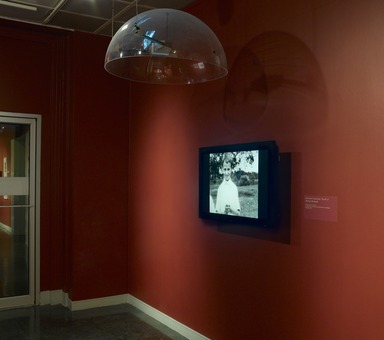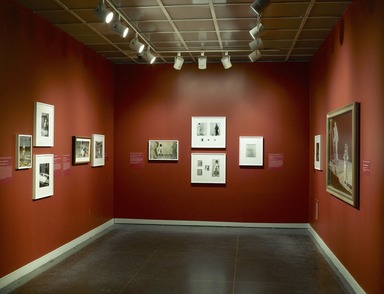

Norman Rockwell: Behind the Camera, November 19, 2010 through April 10, 2011 (Image: DIG_E_2010_Rockwell_01_PS4.jpg Brooklyn Museum photograph, 2011)

Norman Rockwell: Behind the Camera, November 19, 2010 through April 10, 2011 (Image: DIG_E_2010_Rockwell_02_PS4.jpg Brooklyn Museum photograph, 2011)
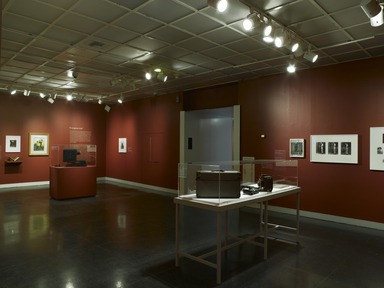
Norman Rockwell: Behind the Camera, November 19, 2010 through April 10, 2011 (Image: DIG_E_2010_Rockwell_03_PS4.jpg Brooklyn Museum photograph, 2011)

Norman Rockwell: Behind the Camera, November 19, 2010 through April 10, 2011 (Image: DIG_E_2010_Rockwell_04_PS4.jpg Brooklyn Museum photograph, 2011)
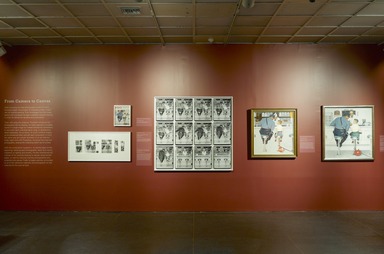
Norman Rockwell: Behind the Camera, November 19, 2010 through April 10, 2011 (Image: DIG_E_2010_Rockwell_05_PS4.jpg Brooklyn Museum photograph, 2011)
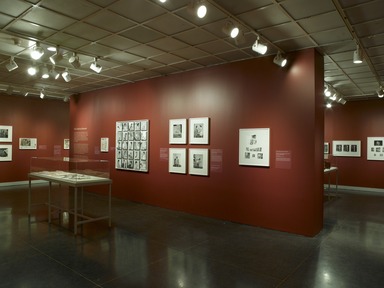
Norman Rockwell: Behind the Camera, November 19, 2010 through April 10, 2011 (Image: DIG_E_2010_Rockwell_06_PS4.jpg Brooklyn Museum photograph, 2011)
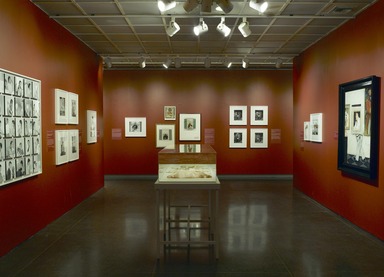
Norman Rockwell: Behind the Camera, November 19, 2010 through April 10, 2011 (Image: DIG_E_2010_Rockwell_07_PS4.jpg Brooklyn Museum photograph, 2011)

Norman Rockwell: Behind the Camera, November 19, 2010 through April 10, 2011 (Image: DIG_E_2010_Rockwell_08_PS4.jpg Brooklyn Museum photograph, 2011)

Norman Rockwell: Behind the Camera, November 19, 2010 through April 10, 2011 (Image: DIG_E_2010_Rockwell_09_PS4.jpg Brooklyn Museum photograph, 2011)

Norman Rockwell: Behind the Camera, November 19, 2010 through April 10, 2011 (Image: DIG_E_2010_Rockwell_10_PS4.jpg Brooklyn Museum photograph, 2011)
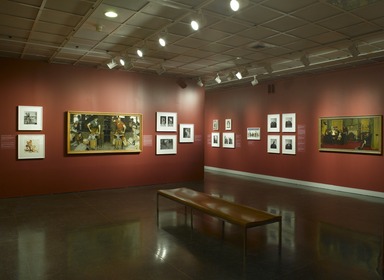
Norman Rockwell: Behind the Camera, November 19, 2010 through April 10, 2011 (Image: DIG_E_2010_Rockwell_11_PS4.jpg Brooklyn Museum photograph, 2011)
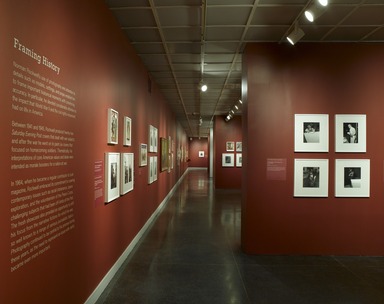
Norman Rockwell: Behind the Camera, November 19, 2010 through April 10, 2011 (Image: DIG_E_2010_Rockwell_12_PS4.jpg Brooklyn Museum photograph, 2011)

Norman Rockwell: Behind the Camera, November 19, 2010 through April 10, 2011 (Image: DIG_E_2010_Rockwell_13_PS4.jpg Brooklyn Museum photograph, 2011)
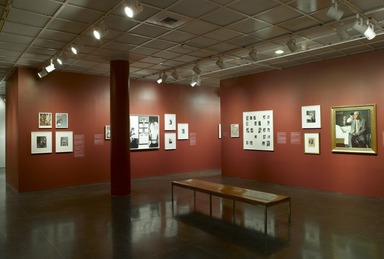
Norman Rockwell: Behind the Camera, November 19, 2010 through April 10, 2011 (Image: DIG_E_2010_Rockwell_14_PS4.jpg Brooklyn Museum photograph, 2011)
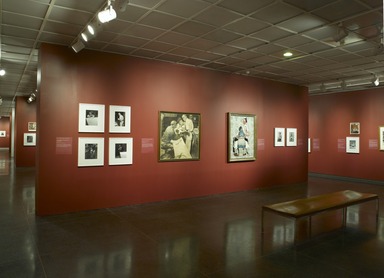
Norman Rockwell: Behind the Camera, November 19, 2010 through April 10, 2011 (Image: DIG_E_2010_Rockwell_15_PS4.jpg Brooklyn Museum photograph, 2011)

Norman Rockwell: Behind the Camera, November 19, 2010 through April 10, 2011 (Image: DIG_E_2010_Rockwell_16_PS4.jpg Brooklyn Museum photograph, 2011)

Norman Rockwell: Behind the Camera, November 19, 2010 through April 10, 2011 (Image: DIG_E_2010_Rockwell_17_PS4.jpg Brooklyn Museum photograph, 2011)
Norman Rockwell: Behind the Camera
-
Norman Rockwell: Behind the Camera
Norman Rockwell (1894–1978) was one of the most influential American visual commentators of the twentieth century. His intricately conceived narrative paintings, reproduced as illustrations in The Saturday Evening Post and other mass-circulation magazines, were immediately understood by a vast audience of readers who saw themselves reflected in the stories he chose to tell. Known for his frequent portrayal of everyday life, he had an exceptional talent for imbuing the ordinary with a sense of historical importance.
This exhibition focuses on a largely unknown facet of Rockwell’s art: his use of photographs as the building blocks of his paintings. Unlike most illustrators, for whom camera studies are merely visual notes—convenient shortcuts to accuracy and efficient aids for meeting deadlines—Rockwell went to elaborate lengths to stage images that portrayed his concepts exactly, sometimes producing as many as a hundred photographs for a single work. This method was key to the hyperrealism that lay at the heart of his appeal.
Once Rockwell developed a concept for an illustration, he began by searching out elements to be photographed. He cast his models, chose his setting, and selected props to capture the particular nuances of his story. Working with photographers much as a director does with a cinematographer, he composed the scene, positioned the camera, and decided when to shoot, although he rarely looked through the viewfinder or tripped the shutter himself.
More than a hundred of the resultant photographic studies are on view here, many for the first time. Most of the photographs are modern prints made from the artist’s archive of more than eighteen thousand original negatives. Also included are select examples of his extant original work prints.
Although Rockwell never intended his reference photographs to be viewed on their own merits, they are nonetheless authentic expressions of his vision and convey his gifts for narrative and character. Presented here alongside the illustrations for which they were done, they provide a new understanding of his artistic process. -
"A Logical Aid"
Norman Rockwell was a natural storyteller and envisioned his scenarios down to the smallest detail, yet he found it difficult to paint purely from his imagination. He knew all too well the solution but resisted the temptation. Though he had turned to photography in the early 1920s when posing young children or animals, it was not until the mid-1930s that it became central to his process. To Rockwell, photography “seemed a low form of cheating, a dishonorable crutch for lazy draftsmen, a betrayal of artistic principles.”
Still, even though he insisted that photography could never compensate for the lack of essential drawing and painting skills, Rockwell saw its advantages immediately. He considered the camera “a logical aid” in capturing poses too difficult for a model to hold. Photography freed him to use amateur models and enabled him to document countless background elements. It made possible adventurous new vantages and perspectives that allowed him to compete with a new generation of illustrators. And black-and-white photographs—he rarely used color film—permitted him to introduce his own palette into the final work. Eventually, photography became so integral to his process that he wrote, “I challenge anybody to show me when I started to use photographs. I’ve always been known as The Kid with the Camera Eye.” -
From Camera to Canvas
After choosing the best photographs to tell his story, Rockwell began the process of translating these images into his finished painting. First, he enlarged his initial rough sketch with a projector to begin a detailed charcoal drawing in which he refined his narrative and composition.
Then, still using the projector, Rockwell introduced his photographs into his drawing. He rarely captured a complete scene in a single image but instead directed his cameramen to document each individual figure, prop, or architectural detail separately. By so doing, he could combine images as he transferred them and edit each component, in much the same way as a photo illustrator or an art director today might work with Photoshop. He traced the projected photographs, erasing the underlying sketch as he worked.
With the composition roughed in, he started again at the beginning, retracing each photographic detail and making notations on lighting and tonality. He then transferred the outlines of his charcoal drawing to canvas using transfer paper, or had his charcoal drawing photographed and projected onto canvas. Finally he began painting, surrounded by all of the reference materials and photographs he had collected for the work at hand. -
“Human-Looking Humans”
More than any other element of his work, Norman Rockwell’s amateur models—his friends, family, and neighbors—imbued his art with tangible naturalism. Today it is a revelation to discover that so many of his most memorable subjects were, in fact, real people. “I paint human-looking humans,” he said, “and the professional models just don’t qualify.”
Photography’s speed and efficiency allowed Rockwell to draw on ordinary citizens who might spare the artist an hour or two of their time and were always paid for their efforts. Constantly on the lookout for promising amateurs who matched his imagined characters, Rockwell was freed from the need to cast models in roles they did not suit—he could get the real thing. With his photographic memory of every face in his hometown, he chose his subjects as much for their appearance as for their ability to perform, smile on cue, and cut loose for the camera. -
Details and Props
Photography was fundamental to Norman Rockwell’s ability to fill his art with realistic details and props. Fastidiously researched to ensure historical accuracy, each prop had to advance the story line and pass the test of authenticity. What Rockwell did not have on hand he bought, borrowed, or rented—from a simple dime-store hairbrush or coffee cup to the chairs and tables from a New York City Automat.
When photographing on location or in studio sessions, Rockwell framed important details individually. The arch of a wrist or a curved ankle would be shot from multiple angles as he explored how to incorporate them into his illustration; such commonplace elements as patterned wallpaper, a coatrack, a folded newspaper, and a cigarette butt were all captured on film before taking their places in his paintings. -
Framing History
Norman Rockwell’s use of photography and attention to details such as models, settings, and props enabled him to frame important historical moments with convincing accuracy. In particular, he devoted considerable attention to the impact that World War II and the civil rights movement had on life in America.
Between 1941 and 1945, Rockwell produced twenty-two Saturday Evening Post covers that dealt with war subjects, and after the war he went on to paint six covers that focused on homecoming soldiers. Thematically, his interpretations of core American values and ideals were intended as morale boosters for a nation at war.
In 1964, when he became a regular contributor to Look magazine, Rockwell embraced its commitment to covering contemporary issues such as racial intolerance, space exploration, and the volunteerism of the Peace Corps, challenging subjects that had been off-limits at the Post. The fresh showcase also provided an opportunity to shift his focus from the narrative fictions for which he was so well known to a range of serious journalistic topics. Photography continued to be central to his process during these years, as the need to represent an issue with clarity became even more important. -
Norman Rockwell in Front of the Camera
These photographs show Rockwell coaching his models and posing for images that would find their way into magazine illustrations, advertisements, or unpublished works. The most frequently captured figure in his photographic archive is the artist himself, often exuberantly performing alongside his subjects and doing his utmost to inspire them. Just as Rockwell had admonished his fellow illustrators to “discard all your own dignity and vanity” when directing their models, he gave his all to achieve the perfect effect. -
Norman Rockwell’s Life and Career
1894 Born in New York City.
1907 Family moves to Mamaroneck, New York.
1910 Leaves Mamaroneck High School after sophomore year to study art full time.
1911 Enrolls in classes at the Art Students League in New York.
1913 Family moves to New Rochelle, New York.
1916 Produces his first Saturday Evening Post cover.
1935 Photography becomes a regular part of his process.
1939 Relocates from New Rochelle, New York, to Arlington, Vermont.
1943 A fire destroys much of the contents of his studio, including his photographic archive.
1953 Moves to Stockbridge, Massachusetts.
1963 Ends his relationship with The Saturday Evening Post, having created 321 covers for the magazine.
1964 Becomes a regular contributor to Look magazine.
1972 Brooklyn Museum hosts a major retrospective of his work.
1978 Dies at the age of 84 in Stockbridge, Massachusetts. -
The Artist as Director
Norman Rockwell adeptly coaxed expressions from his cast of amateur performers with the skill of a seasoned filmmaker. He began each modeling session by showing his rough sketches to his assembled models and describing his concept. Then he struck the poses himself and enthusiastically acted out each part to demonstrate what he wanted.
Rockwell next positioned his models and guided them into the poses and expressions he required. He gave steady direction as his cameraman exposed frame after frame. From behind the camera he might gently cajole or resort to wisecracking, shouting, jumping, or pounding on the floor. “Do anything and everything,” he said, “but get your story on film even if it kills the model and you too.”
Photography sessions could last just minutes or run for hours as he developed his ideas. He might make a hundred or more photographs for a project, creating a spectrum of poses and expressions from which to choose. -
Setting the Stage
Norman Rockwell was willing to travel any distance to photograph far-flung locations for his backgrounds. He went to New Mexico for Breaking Home Ties, Missouri for Norman Rockwell Visits a Country Editor, and New York City for Saying Grace. Even if he did not pose his models in situ, he felt it was important to experience the actual location, where, he believed, he could get the authentic “feel and smell” of the place and gain ideas he could not have imagined in the studio. He believed this, in turn, would communicate to viewers a sense of authenticity of the setting, even if they had never seen the place.
-
July 1, 2010
To create many of his iconic, quintessentially American paintings, most of which served as magazine covers, Norman Rockwell worked from carefully staged study photographs that are on view for the first time, alongside his paintings, drawings, and related tear sheets, in Norman Rockwell: Behind the Camera. The exhibition, which will be on view at the Brooklyn Museum from November 19, 2010, through April 10, 2011, was organized by the Norman Rockwell Museum in Stockbridge, Massachusetts, following a two-year project that preserved and digitized almost 20,000 negatives.
Beginning in the late 1930s, Norman Rockwell (1894–1978) adopted photography as a tool to bring his illustration ideas to life in studio sessions. Working as a director, he carefully staged his photographs, selecting props, locations, and models and orchestrating every detail. He began by collecting authentic props and costumes, and what he did not have readily available he purchased, borrowed, or rented—from a dime-store hairbrush or coffee cup to a roomful of chairs and tables from a New York City Automat. He created numerous photographs for each new subject, sometimes capturing complete compositions and, in other instances, combining separate pictures of individual elements. Over the forty years that he used photographs as his painting guide, he worked with many skilled photographers, particularly Gene Pelham, Bill Scovill, and Louis Lamone.
Early in his career Norman Rockwell used professional models, but he eventually found that this method inhibited his evolving naturalistic style. When he turned to photography, he turned to friends and neighbors instead of professional models to create his many detailed study photographs, which he found liberating. Working from black-and-white study photographs also allowed Rockwell more freedom in developing his final work. “If a model has worn a red sweater, I have painted it red—I couldn’t possibly make it green.…But when working with photographs I seem able to recompose in many ways: as to form, tone, and color,” Rockwell once commented.
Included in the exhibition will be more than one hundred framed digital prints alongside paintings, drawings, magazine tear sheets, photographic equipment, and archival letters, as well as an introductory film. Among the paintings on view will be the Brooklyn Museum’s painting The Tattoo Artist—one of many that Rockwell created during World War II—depicting a young sailor stoically having his arm tattooed, shown alongside working photographs by Gene Pelham, and the watercolor Dugout, also from the Museum’s collection, portraying the Chicago Cubs baseball team being jeered by fans of the Boston Braves. This work will be displayed along with the September 4, 1948, Saturday Evening Post cover on which it appeared and study photographs by Gene Pelham.
Among the magazine covers included in the exhibition are several from The Saturday Evening Post, for which Rockwell worked for nearly fifty years before turning his attentions to more socially relevant subjects for Look magazine, with which he had a decade-long relationship. Included is The Art Critic, showing an aspiring artist scrutinizing paintings in a gallery, which appeared in the April 16, 1955, issue. The exhibition also includes several series of photographs and the final paintings and magazine tear sheets, among them the July 13, 1946, Saturday Evening Post illustration Maternity Waiting Room, shown along with a series of images by an unidentified photographer that served as details of the final work, which portrays ten anxious soon-to-be fathers.
Norman Rockwell became one of the most famous illustrators of his generation through his naturalistic, narrative paintings done in a readily recognizable style, which appeared in national magazines that reached millions of readers. Born in 1894 on Manhattan’s Upper West Side, he left high school to study at the National Academy of Design and later the Art Students League of New York. By the age of eighteen he was already a published artist specializing in children’s illustration and had become a regular contributor to magazines such as Boys’ Life, the monthly magazine of the Boy Scouts of America, where he was soon named art director. In 1916 he painted his first cover for The Saturday Evening Post, beginning a forty-seven-year relationship that resulted in 323 covers and was the centerpiece of his career.
Early in his career Rockwell had a studio in New Rochelle, New York. He later moved with his wife and three sons to Arlington, Vermont, where many of his family and neighbors served as models in working photographs for his illustrations, which began to focus on small-town American life. In 1943 a fire destroyed his Vermont studio, along with numerous paintings and many of the photographic studies. A decade later the family relocated to Stockbridge, Massachusetts. In 1963 he severed his forty-seven- year association with The Saturday Evening Post and began to work for Look magazine, where, during his ten-year association, he produced work that reflected his personal concerns, including civil rights, America’s war on poverty, and space exploration.
Norman Rockwell: Behind the Camera was organized by the Norman Rockwell Museum, where it was presented from November 7, 2009, through May 31, 2010. Conceived in collaboration with Ron Schick, guest curator for the Norman Rockwell Museum and author of the accompanying publication, the exhibition reveals a rarely seen yet fundamental aspect of Rockwell’s creative process and unveils a significant new body of Rockwell imagery through the medium of photography. The Brooklyn Museum presentation is organized by Sharon Matt Atkins, Acting Head of Exhibitions and Managing Curator.
Press Area of Website
View Original -
February 1, 2013
The first major exhibition in the United States to explore the private lives, power struggles, and collecting practices of Spain’s New World elite brings together approximately 160 exceptional works in a wide range of media that illuminate conspicuous consumption and domestic display in the colonial era. Behind Closed Doors: Art in the Spanish American Home, 1492–1898 will debut at the Brooklyn Museum, where it will be on view September 20, 2013, through January 12, 2014, before traveling to three additional venues.
Included will be paintings, manuscripts, prints, sculpture, decorative-arts objects, and textiles. The material demonstrates how colonial Spanish America’s new moneyed classes—including Spaniards, Creoles (Spaniards born in the New World), individuals of mixed race, and indigenous people—secured their social status through the spectacular private display of luxury goods from all over the world. The exhibition will invite the visitor into an elite Spanish colonial home, beginning with more public reception rooms, hung with elaborately costumed family portraits and filled with fine imported and locally produced luxury goods, and ending with more private rooms, displaying objects that also spoke to the racial and social identity of their owners.
When the Spanish empire first expanded its borders into the Americas, the early conquistadors brought with them a rich artistic tradition, along with a monotheistic religion and an obsession with racial purity. Within a hundred years, fabulous fortunes had been amassed in the New World, thanks to the region’s abundant natural resources and robust market economy. Although Spanish America’s newly privileged class consisted of some of the wealthiest people in the world, the crown consistently favored those born in Spain for prominent local government and church positions, and political reforms in the eighteenth century further limited Creole power. In defiance, American-born elites responded by acquiring and ostentatiously displaying luxury goods from around the world in their dress and in their homes as pointed reminders of the crown’s reliance on New World resources. Their collections became more eclectic, including works by local artists and indigenous craftsmen as well as European masters.
Most of the objects in the exhibition are drawn from the Brooklyn Museum’s superb Spanish colonial holdings, supplemented by additional selections from the American, European, Asian, and Islamic collections as well as loans from public and private collections. For the first time in an exhibition in this country, Spanish colonial objects destined for the home will be paired with British American counterparts for purposes of comparison. The exhibition, which encompasses all of the New World under Spanish domination, calls attention to the Caribbean’s pivotal but, surprisingly, often overlooked role in Spanish American history.
Among the exhibition highlights is a group of luxury objects from the viceroyalty of New Spain, which comprised present-day Mexico and Central America. One is a shell-inlaid and painted folding screen, or biombo enconchado, commissioned expressly for Mexico City’s viceregal palace about 1700 by Viceroy José Sarmiento de Valladares. This extremely rare, massive six-panel screen will be a focal point of the exhibition, along with a newly discovered late eighteenth-century Neoclassical portrait by the mixed-race Puerto Rican painter José Campeche. Depicting twenty-one-year-old Doña Maria de los Dolores Gutiérrez del Mazo y Pérez, the painting commemorated her marriage to the future viceroy of New Granada.
Other objects in the exhibition include a pair of painted leather Peruvian chests from about 1690 decorated with allegories of the four elements, symbols of the zodiac, and a scene of a merry company dining outdoors; eighteenth-century Chinese export porcelain bearing the coat of arms of one of colonial Mexico’s leading families; an early sixteenth-century medallion Ushak carpet from Turkey of the type recorded in South American women’s sitting rooms; a late eighteenth-century polychromed wood portable tabernacle, adorned with the Virgin Mary and mirrors to reflect candlelight; Free Women of Color with Their Children and Servants in a Landscape, a portrait from about 1764–96 of members of the mixed-race elite in the British colony of Dominica by Italian painter Agostino Brunias; and Francisco de Goya’s monumental portrait of Peruvian-born Don Tadeo Bravo de Rivero, painted in Madrid in 1806.
The Brooklyn Museum began acquiring domestic Spanish colonial art in earnest in 1941 when Herbert J. Spinden, Curator of American Indian Art and Primitive Cultures, purchased approximately fourteen hundred art works from eight Latin American countries. The collection, which now ranks among the country’s finest, has been augmented with important recent acquisitions that are included in the exhibition.
Behind Closed Doors has been organized by Richard Aste, Curator of European Art at the Brooklyn Museum. It will be accompanied by a fully illustrated catalogue co-published by the Museum and the Monacelli Press. The volume is edited by Aste, with principal texts by four leading scholars of Spanish and British American art and material culture: Jorge F. Rivas Pérez, Spanish Colonial Curator of the Colección Patricia Phelps de Cisneros; Suzanne L. Stratton-Pruitt, independent art historian and writer; Michael A. Brown, Research Associate in the New World Department at the Denver Art Museum; and Mia L. Bagneris, Assistant Professor in the Newcomb Art Department at Tulane University.
Generous support for this exhibition has been provided by the National Endowment for the Humanities and Christie’s.
Behind Closed Doors exhibition
